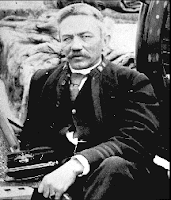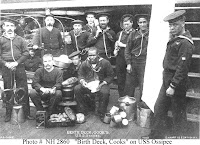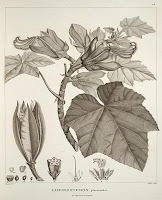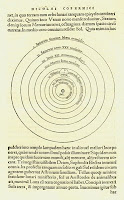 "Paper plate ad, couple at dock," from George Eastman House's Flickr photostream.
"Paper plate ad, couple at dock," from George Eastman House's Flickr photostream.More information on the George Eastman House photography collection is available at their website.
From 2005-2012, Maritime Compass was a review of current happenings in Maritime Studies, including information on Library and Museum events, Scholarly conferences or meetings, book reviews, news items, and just plain old interesting maritime facts.
 "Paper plate ad, couple at dock," from George Eastman House's Flickr photostream.
"Paper plate ad, couple at dock," from George Eastman House's Flickr photostream.
Archaeoastronomy is the interdisciplinary study of prehistoric, ancient, and traditional astronomies within their cultural context. Its sources include both written and archaeological remains and it embraces calendrics, practical observation, sky lore, celestial myth, and more. Its true scope establishes it as an "anthropology of astronomy."
Once you've found a magazine that interests you, you can browse other issues of that magazine from the "About this magazine" page. Click on the "About this magazine" link at the top left of the screen, and scroll down to the section marked "Browse all issues." You can then explore different issues of the magazine by clicking on a decade that interests you, and then scrolling through the individual issues from that time.
The New-York Historical Society has made available the finding aid for its newly processed Naval History Society Collection. You can find it at http://dlib.nyu.edu/findingaids/html/nyhs/NHSColl.html
where it is fully searchable.
The Collection consists of 53 individual collections, many named for renowned naval officers or vessels. These include correspondence, letterbooks, journals and diaries, lectures, essays, account books, biographical writings, genealogical information, scrapbooks, orders, notes, articles and clippings, photographs, manuscripts, and ships' logs, as well as the organizational records and correspondence of the Naval History Society itself.
The majority of the collections document American naval engagements and commercial maritime pursuits, personalities, and vessels; a few collections of British and French documents are included. The Collection as a whole provides primary sources on American naval involvement in hostilities from the American Revolution to the Spanish American War, as well as routine commercial and naval shipboard life, naval design, navigation, education and officer training. The Society's records document the founding, management, and activities of a collecting and publishing organization in the first third of the 20th century.
Processing of the Collection was made possible by the Gladys Krieble Delmas Foundation.
 Our friends at the Casco Bay Boaters Blog have sent along a fantastic link to the OldMagazineArticles.com. There is a lot there of maritime interest; the browse list on the home page includes links to Titanic articles and U.S. Navy uniform articles. You can also search by keywords, and the resulting list of articles includes long summaries that make it easy to select a pertinent resource. The articles I viewed were all Adobe Acrobat .pdf files, preserving the look of the original hardcopy, and many had links to relevant film clips.
Our friends at the Casco Bay Boaters Blog have sent along a fantastic link to the OldMagazineArticles.com. There is a lot there of maritime interest; the browse list on the home page includes links to Titanic articles and U.S. Navy uniform articles. You can also search by keywords, and the resulting list of articles includes long summaries that make it easy to select a pertinent resource. The articles I viewed were all Adobe Acrobat .pdf files, preserving the look of the original hardcopy, and many had links to relevant film clips. The story of the painting of the cover of Tim Powers' On Stranger Tides has been told by the artist, James Gurney. Perhaps better known for his Dinotopia books, he writes and illustrates Gurney Journey primarily for artists and writers, but it is also interesting for readers who've ever wondered about a cover illustration, or just how one might get a realistic animated skeleton model.
The story of the painting of the cover of Tim Powers' On Stranger Tides has been told by the artist, James Gurney. Perhaps better known for his Dinotopia books, he writes and illustrates Gurney Journey primarily for artists and writers, but it is also interesting for readers who've ever wondered about a cover illustration, or just how one might get a realistic animated skeleton model.
 The BBC has run a story on the newly released recordings from the British Library, featuring some of the greatest writers of the past century, including the complete version of the only known recording of Virginia Woolf. (A two-minute excerpt is available with the article, and over seven minutes of her "Eulogy to words" is available on the BBC Four's Interviews site.)
The BBC has run a story on the newly released recordings from the British Library, featuring some of the greatest writers of the past century, including the complete version of the only known recording of Virginia Woolf. (A two-minute excerpt is available with the article, and over seven minutes of her "Eulogy to words" is available on the BBC Four's Interviews site.) "Ye ghost ship," from the Library of Congress' Prints & Photographs online catalog, which currently provides access to over 50% of the Division's holdings.
"Ye ghost ship," from the Library of Congress' Prints & Photographs online catalog, which currently provides access to over 50% of the Division's holdings.
 Coriolis: the Interdisciplinary Journal of Maritime Studies is seeking English language scholarly manuscripts for publication in a new on-line, fully indexed journal published in conjunction with the National Maritime Digital Library, hosted at Mystic Seaport with support from the Arthur Vining Davis Foundation.
Coriolis: the Interdisciplinary Journal of Maritime Studies is seeking English language scholarly manuscripts for publication in a new on-line, fully indexed journal published in conjunction with the National Maritime Digital Library, hosted at Mystic Seaport with support from the Arthur Vining Davis Foundation. Are you confronted with preservation issues on the job, but money for training is scarce? Or absent? Preservation 101 is a free online course from the Northeast Document Conservation Center--itself a wealth of free information on preservation and conservation, including Resources for private and family collections, a short, must-read overview for anyone who confronted with preservation issues at home.
Are you confronted with preservation issues on the job, but money for training is scarce? Or absent? Preservation 101 is a free online course from the Northeast Document Conservation Center--itself a wealth of free information on preservation and conservation, including Resources for private and family collections, a short, must-read overview for anyone who confronted with preservation issues at home. On Friday Oct. 10, I was biking in to work through Aquatic Park as usual, and luckily I had a camera with me. I never expected to see a junk that wasn't the Grace Quan in Aquatic Park, and little did I know about the treat that lay in store.
On Friday Oct. 10, I was biking in to work through Aquatic Park as usual, and luckily I had a camera with me. I never expected to see a junk that wasn't the Grace Quan in Aquatic Park, and little did I know about the treat that lay in store. The latest top ten list from the Guardian brings us Philip Hoare's top ten whale tales. The author of Leviathan, or The Whale starts his list with Moby Dick, but continues with more obscure titles including nonfiction covering various disciplines, poetry, and even a guidebook to marine mammals.
The latest top ten list from the Guardian brings us Philip Hoare's top ten whale tales. The author of Leviathan, or The Whale starts his list with Moby Dick, but continues with more obscure titles including nonfiction covering various disciplines, poetry, and even a guidebook to marine mammals.
 To celebrate the 250th anniversary of Lord Horatio Nelson's birth, the Guardian published its latest top ten book list, Roy and Lesley Adkins's top 10 Nelson books. Their recommendation is that one read two or three of the many biographies, but their annotations will guide the reader who might be interested in reading only one--or in finding a place to begin studying Nelson and his world. If you're interested in the man, his navy, Portsmouth, or in touring Nelson memorials, you'll find a book here of interest.
To celebrate the 250th anniversary of Lord Horatio Nelson's birth, the Guardian published its latest top ten book list, Roy and Lesley Adkins's top 10 Nelson books. Their recommendation is that one read two or three of the many biographies, but their annotations will guide the reader who might be interested in reading only one--or in finding a place to begin studying Nelson and his world. If you're interested in the man, his navy, Portsmouth, or in touring Nelson memorials, you'll find a book here of interest.
Any of us who tampers with the remains of the past has a moral responsibility to it...
 I first became interested in bluefin tuna through reading Trevor Corson's Zen of fish : the story of sushi from Samurai to supermarket (which is now out in paperback as The Story of sushi). After hearing Richard Ellis on NPR's Talk of the Nation, I'm eager to read his new book, Tuna : a love story.
I first became interested in bluefin tuna through reading Trevor Corson's Zen of fish : the story of sushi from Samurai to supermarket (which is now out in paperback as The Story of sushi). After hearing Richard Ellis on NPR's Talk of the Nation, I'm eager to read his new book, Tuna : a love story.
...onboard speech was most likely underclass British sailor with extra curse words, augmented with a polyglot slang of French, Italian, Spanish, and Dutch picked up around the trade routes
 I have been eagerly following the current wave of Arctic exploration, and clicked over to the Arctic Chronicles, the new USGS blog by Jessica Robertson, with anticipation. It wasn't the image of ice to port that gave me goosebumps, nor the thrill of following along on an expedition in a way unthought of in Lady Franklin's day; it was the name of the ship: U.S. Coast Guard Cutter Healy.
I have been eagerly following the current wave of Arctic exploration, and clicked over to the Arctic Chronicles, the new USGS blog by Jessica Robertson, with anticipation. It wasn't the image of ice to port that gave me goosebumps, nor the thrill of following along on an expedition in a way unthought of in Lady Franklin's day; it was the name of the ship: U.S. Coast Guard Cutter Healy. Tardigrades, also known as water bears, are fascinating creatures. They are little studied, but very successful--they live on land, in fresh water, and in the sea. They are amazingly hardy creatures, able to survive incredibly harsh environments, and have become the first known animal able to survive the vacuum of outer space.
Tardigrades, also known as water bears, are fascinating creatures. They are little studied, but very successful--they live on land, in fresh water, and in the sea. They are amazingly hardy creatures, able to survive incredibly harsh environments, and have become the first known animal able to survive the vacuum of outer space. The maritime treasure on Flickr is breathtaking. Beyond the beauty of the images shared by contemporary photographers (one of my favorites is OneEighteen) are the historic images being uploaded to Flickr in droves. The image that accompanies this post is from The Smithsonian Institution's photostream. Of course, not all of it is maritime, but the institutional users are taking their Flickr presence very seriously, with thorough captions, topical sets for easy browsing, and tags that allow easy searching & retrieval of their images.
The maritime treasure on Flickr is breathtaking. Beyond the beauty of the images shared by contemporary photographers (one of my favorites is OneEighteen) are the historic images being uploaded to Flickr in droves. The image that accompanies this post is from The Smithsonian Institution's photostream. Of course, not all of it is maritime, but the institutional users are taking their Flickr presence very seriously, with thorough captions, topical sets for easy browsing, and tags that allow easy searching & retrieval of their images. It's true; according to Randy Boswell's article, Parks Canada to lead new search for Franklin's ships:
It's true; according to Randy Boswell's article, Parks Canada to lead new search for Franklin's ships:
The Canadian government confirmed Friday it will embark on the most extensive search ever for the fabled British shipwrecks Erebus and Terror...
I am where I love to be. Behind me, the island of Corfu; before me, the coast of Albania.
 To celebrate its "Summer Surf" film series, the Library of Congress has posted an an interview with John Severson, founder of Surfer Magazine and director of "Pacific Vibrations." In a short interview, they cover a lot of ground (or water): surfing, making surfing films, making films today, and where the genre is headed.
To celebrate its "Summer Surf" film series, the Library of Congress has posted an an interview with John Severson, founder of Surfer Magazine and director of "Pacific Vibrations." In a short interview, they cover a lot of ground (or water): surfing, making surfing films, making films today, and where the genre is headed.
 Trevor Corson (author of one of my favorite books, The zen of fish) maintains a very entertaining blog that is a great source of information on sustainable seafood, The Scrawling Claw. Recently he guided his readers to a new publication, Seafood solutions : a chef's guide available from the The Chef's Collective.
Trevor Corson (author of one of my favorite books, The zen of fish) maintains a very entertaining blog that is a great source of information on sustainable seafood, The Scrawling Claw. Recently he guided his readers to a new publication, Seafood solutions : a chef's guide available from the The Chef's Collective. Then you need General mess manual and cookbook for use on board vessels of the United States Navy from 1904. The Internet Archive edition is available in several formats, including Adobe Acrobat .pdf, plain text, and even a flip book that allows you to turn the pages as they appear in the printed edition.
Then you need General mess manual and cookbook for use on board vessels of the United States Navy from 1904. The Internet Archive edition is available in several formats, including Adobe Acrobat .pdf, plain text, and even a flip book that allows you to turn the pages as they appear in the printed edition.
Soak 25 pounds of stale bread in cold water and drain dry.
Add 25 pounds of sifted flour, 5 pounds of suet chopped fine, 3
pounds of raisins, 5 pounds of sugar, 4. pounds of currants, 2
pounds of prunes, 3 tablespoonfuls of salt, 1 teaspoonful of ground
cloves, 1 tablespoonful of ground cinnamon, and 1 wineglassful
of vinegar, and mix all thoroughly with cold water. Turn the
bags inside out, drop them into boiling water, render out slightly,
and drop into dry flour, dredging them thoroughly. Turn the
bags flour side in and fill them with the pudding, securing the
opening firmly, drop into the copper in which water is boiling
and cook for at least two hours. If there is sufficient time, the
pudding will be improved by boiling three or four hours.
cookery will bring up screens full, as it appears in many titles of older cookbooks as well as being the current Library of Congress subject heading term.
California's State Parks: California's state park system is one of the country's largest and most successful. Unfortunately, the system remains drastically underfunded and at risk of deterioration—a result of more than $1 billion in deferred maintenance.
 Several books of maritime interest have been added to Project Gutenberg:
Several books of maritime interest have been added to Project Gutenberg:
As We Swept Through The Deep by Gordon Stables, 1894.
The sailor's word-book by W.H. Smyth, 1867.
With Cochrane the Dauntless by G.A. Henty, 1897.
 Thanks to Michael D. Barton, I've discovered the Royal Society Library podcasts. Many are offered as mp3 audio as well as m4v video, as is one of particular interest to maritime folks, Into the blue: voyages of discovery 1700-1850 by Rupert Baker, about the voyaging fellows of the Society.
Thanks to Michael D. Barton, I've discovered the Royal Society Library podcasts. Many are offered as mp3 audio as well as m4v video, as is one of particular interest to maritime folks, Into the blue: voyages of discovery 1700-1850 by Rupert Baker, about the voyaging fellows of the Society. The Kraken, mermaids, and the Nasca Killer Whale are among the mythic creatures represented in the Field Museum's exhibit Mythic Creatures. If you can't make it to Chicago to see the exhibit in person, the online exhibit is worth a look. If you're interested only in maritime creatures, you can go directly to the Water section of the exhibit, but don't miss the Dragons section, as dragons from many traditions are affiliated with the water.
The Kraken, mermaids, and the Nasca Killer Whale are among the mythic creatures represented in the Field Museum's exhibit Mythic Creatures. If you can't make it to Chicago to see the exhibit in person, the online exhibit is worth a look. If you're interested only in maritime creatures, you can go directly to the Water section of the exhibit, but don't miss the Dragons section, as dragons from many traditions are affiliated with the water.
The search for HMS Ontario began in earnest in 2005 after they obtained documents about the loss from British and Canadian archives.
 Dennis Overbye's article Among Scientific Treasures, a Gem in yesterday's NY Times is not just about the auction of Dr. Richard Green's books, but about the joy of holding these books--books that changed the world. Among the items to be sold are a first edition of Darwin's On the Origin of Species by Means of Natural Selection, Newton's Philosophiae Naturalis Principia Mathematica and Nicolaus Copernicus's book De Revolutionibus Orbium Coelestium.
Dennis Overbye's article Among Scientific Treasures, a Gem in yesterday's NY Times is not just about the auction of Dr. Richard Green's books, but about the joy of holding these books--books that changed the world. Among the items to be sold are a first edition of Darwin's On the Origin of Species by Means of Natural Selection, Newton's Philosophiae Naturalis Principia Mathematica and Nicolaus Copernicus's book De Revolutionibus Orbium Coelestium.